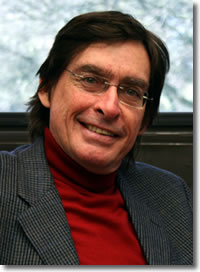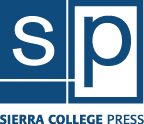Welcome to the Journal of Sierra Nevada History & Biography
Daniel DeFoe, Executive Editor
“That’s Entertainment”
 Someone once said, “Anyone who tries to make a distinction between education and entertainment doesn’t know the first thing about either.” In that spirit we offer the third edition of Snowy Range Reflections: A Journal of Sierra Nevada History and Biography. Education and entertainment are entwined in an issue devoted to entertainment, Gold Country style.
Someone once said, “Anyone who tries to make a distinction between education and entertainment doesn’t know the first thing about either.” In that spirit we offer the third edition of Snowy Range Reflections: A Journal of Sierra Nevada History and Biography. Education and entertainment are entwined in an issue devoted to entertainment, Gold Country style.
In the golden lands surrounding the Snowy Range, entertainments of any kind were always in fierce demand. They meant escape from the hard work in the gold fields and mines, the sawmills, quarries and the rough and tumble of an emerging modern California. Also, as you’ll see, the natural beauty and ruggedness of the Sierra Nevada often provided romantic backdrops for films and novels.
Film
We begin with silver screen legend Charlie Chaplin as the little tramp in the 1925 classic “The Gold Rush." Chaplin called this film his own personal favorite. The little tramp is portrayed as a romantic idealist and lonely prospector during the Klondike Gold Rush era. Filmed in part at Sugar Bowl near Truckee and Donner Lake, “The Gold Rush” was inspired by the tragic Donner Party story. We’ve also included an article clipped from the Sierra Sun newspaper about the family of Rollie Totheroh, who worked as Chaplin’s cameraman. The piece recounts Rollie’s role in the making of the film and how his family retraced his steps in a visit to Truckee in 2005.
Song
Famous vocalists frequently visited the 19th century gold country finding entertainment-starved miners clamoring (and paying well) for an evening of song. One such was Kate Hayes, the Swan of Erin, an operatic soprano who, among these enthusiastic audiences, became an entertainment superstar. In this issue her close connection to Grass Valley is highlighted.
Locations
Also highlighted in this edition is Railtown 1897, the state historic park near Jamestown. Railtown 1897, known as the “movie railroad,” is famous as the location of hundreds of productions including blockbuster films like Back to the Future III and successful TV shows like Petticoat Junction. We’ve also included clips from film works done elsewhere in the Sierra, among them Godfather II in Lake Tahoe, Phenomenon shot partly in Auburn, and a Ford commercial starring Kermit the frog filmed on the American River.
Theater
You’ll enjoy a hilarious eyewitness description of a raucous stage production in Nevada City penned by Scottish visitor John David (J.D.) Borthwick. The account dates from 1851 at the roaring height of the California Gold Rush.
“The Trouble Will Begin At Eight”: No study that hopes to educate about gold country entertainment would be complete without an account of the lectures of Mark Twain. You’ll read a description of Twain’s first venture into lecturing/entertaining in Grass Valley, Nevada City and the surrounding region. This selection offers insight into some of the earliest work in Twain’s celebrated thirty-year career.
Playbills
Finally, for your educated entertainment, peruse our photo gallery of 19th century playbills. The work is interesting as an artful lens by which to view the history of early entertainment in the Sierra Nevada region. The playbills come from the Online Archive of California, a consortium of museums, libraries, and research institutions throughout the state. Enjoy—that’s entertainment Gold Country style.
Daniel DeFoe
Executive Editor
Professor of History, Sierra College
